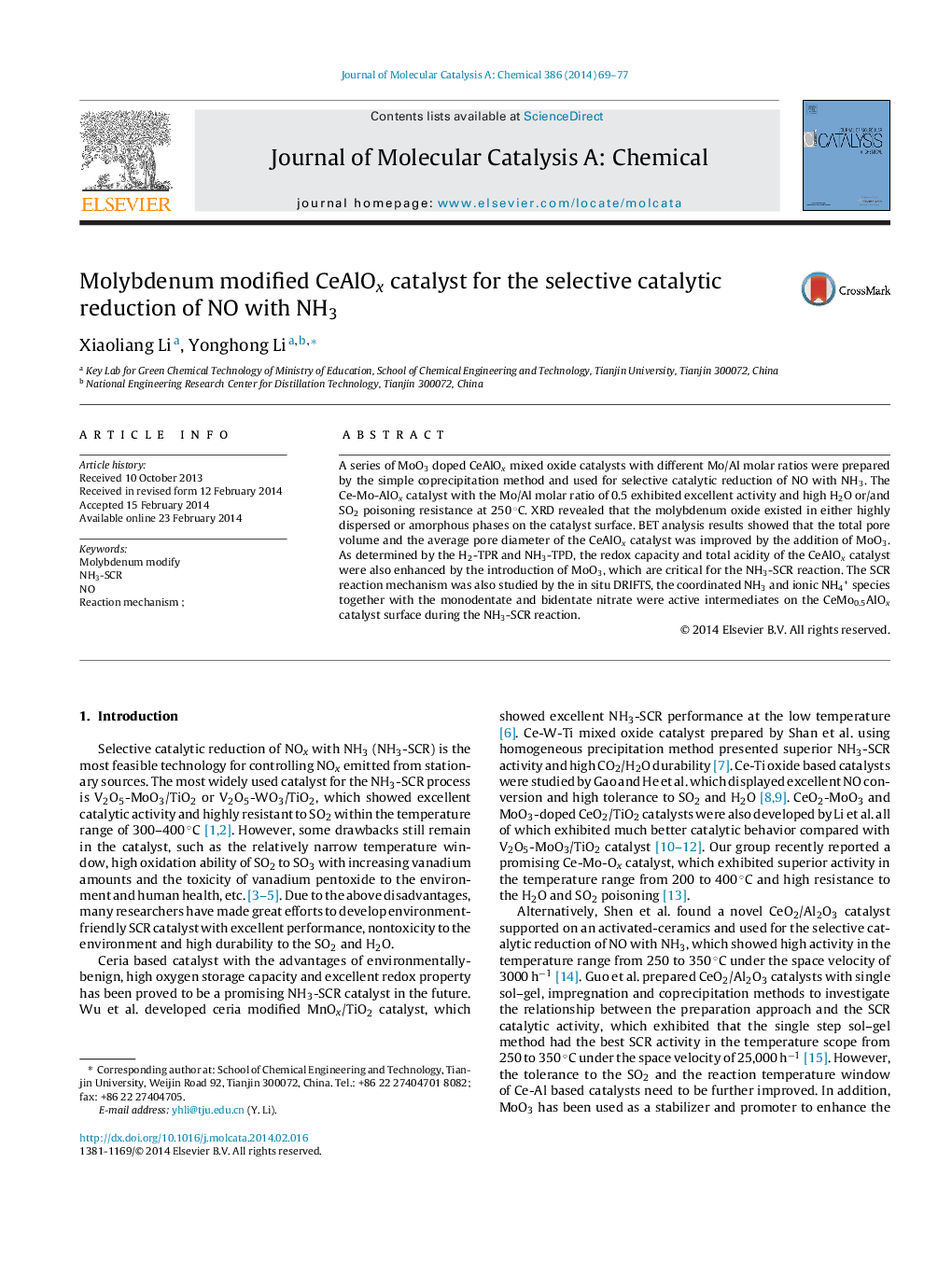| Article ID | Journal | Published Year | Pages | File Type |
|---|---|---|---|---|
| 65546 | Journal of Molecular Catalysis A: Chemical | 2014 | 9 Pages |
•The MoO3 modified CeAlOx catalyst exhibited excellent NH3-SCR catalytic activity and high resistance to SO2 or/and H2O poisoning at 250 °C.•The redox capacity and total acidity of the catalyst were enhanced by the introduction of Mo.•A possible reaction mechanism was proposed over the CeMo0.5AlOx catalyst.
A series of MoO3 doped CeAlOx mixed oxide catalysts with different Mo/Al molar ratios were prepared by the simple coprecipitation method and used for selective catalytic reduction of NO with NH3. The Ce-Mo-AlOx catalyst with the Mo/Al molar ratio of 0.5 exhibited excellent activity and high H2O or/and SO2 poisoning resistance at 250 °C. XRD revealed that the molybdenum oxide existed in either highly dispersed or amorphous phases on the catalyst surface. BET analysis results showed that the total pore volume and the average pore diameter of the CeAlOx catalyst was improved by the addition of MoO3. As determined by the H2-TPR and NH3-TPD, the redox capacity and total acidity of the CeAlOx catalyst were also enhanced by the introduction of MoO3, which are critical for the NH3-SCR reaction. The SCR reaction mechanism was also studied by the in situ DRIFTS, the coordinated NH3 and ionic NH4+ species together with the monodentate and bidentate nitrate were active intermediates on the CeMo0.5AlOx catalyst surface during the NH3-SCR reaction.
Graphical abstractMoO3 modified CeAlOx catalyst prepared by the facile coprecipitation method has been utilized for the selective catalytic reduction of NO with NH3. The catalyst showed excellent activity, prominent resistant to the space velocity and exhibited high SO2 or/and H2O durability at 250 °C.Figure optionsDownload full-size imageDownload high-quality image (114 K)Download as PowerPoint slide
